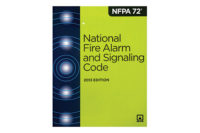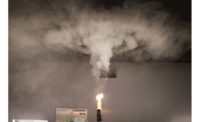A fire alarm system is a crucial part of a building’s overall fire protection and life safety strategy. The main is a crucial part of a building’s overall fire protection and life safety strategy. The main functions of a fire alarm system include detecting a fire, notifying the occupants and emergency forces, and performing emergency control functions such as closing fire doors and shutting down HVAC systems to limit the spread of fire.
A fire alarm system uses initiating devices such as smoke detectors, heat detectors and waterflow switches to detect a fire within a space by monitoring for the products of combustion. It’s important that the proper initiating device is used to have an effective system that can promptly detect a fire while limiting nuisance alarms.
Below we will introduce some of the most common initiating devices for a fire alarm system and discuss some considerations for their design.
Manually Actuated Initiating Device
Often referred to as manual fire boxes, pull stations or call points, manually actuated initiating devices initiate an alarm signal when there is an input from a person, such as pulling a lever or pushing a button. These devices can require multiple actions, such as lifting a cover or breaking glass, prior to actuating the device.
Manually actuated initiating devices may be required by the fire, building or life safety code to allow occupants to initiate a fire alarm.
Where required, they need to be within 5 feet (1.5 meters) of each exit doorway from each floor. Some fire, building and life safety codes have exemptions that do not require manually actuated initiating devices to be installed throughout fully sprinklered buildings provided at least one is in an approved location.
Heat Detectors
Heat detectors are a commonly used initiating device in areas where smoke detectors cannot be used due to environmental factors such as temperature, humidity or particulate matter in the air. Heat detectors are less susceptible to nuisance alarms as compared to smoke detectors but will take longer to respond to a fire. Therefore, they are typically only used in places where the aim is to use the fire alarm system for property protection as opposed to life safety, in which case smoke detectors would be recommended.
Because heat detectors activate based on temperature, it is important that these detectors not be installed near heat sources within the building, such as ceiling mounted heaters, and that their placement be designed by a qualified person.
Here we discuss two types of heat detectors: spot type and linear:
Spot Type Heat Detectors
A spot-type heat detector detects heat concentrated in a particular location. There are several types of spot-type heat detectors, but the most common ones are fixed temperature, rate of rise and analog addressable.
Fixed temperature detectors will activate when they reach a specific temperature. They can be non-restorable, meaning they need to be replaced after they are activated, or restorable, meaning they restore themselves after an activation.
Rate of rise heat detectors will activate when the temperature in the space rises at a rate that exceeds a specified rate.
Another type of spot-type heat detector is the analog addressable heat detector. These detectors are essentially sensors that can measure and report back their temperature to an addressable fire alarm control unit (FACU). The alarm temperature setpoints are then programmed into the FACU, which allows for different types of responses to be initiated based on different temperature levels.
Linear Heat Detection
Linear heat detection consist of a wire with two steel conductors in it separated by a heat sensitive polymer. When heated to a specified temperature, the polymer will melt and allow the two steel conductors to come into contact with each other, causing a short circuit that will initiate an alarm.
Linear heat detection is best used to detect fire along long distances or in difficult to access locations such as hydraulic hose trays, cable trays, transformers or in concealed spaces. It can also be used within a space to activate a pre-action sprinkler system.
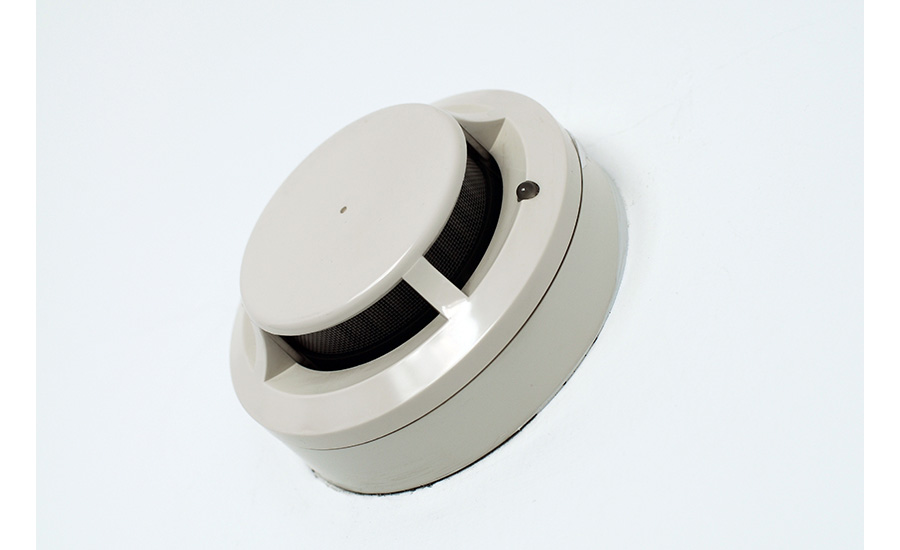
Smoke Detectors
It’s worth noting the difference between a smoke detector and a smoke alarm. A smoke detector is just a sensor that monitors for smoke and is connected to a FACU, while a smoke alarm has both the sensor to monitor for smoke and the sounder, circuitry and power needed to notify the building occupants of a fire.
For the sake of this article, we are discussing smoke detectors — although the types of sensors used (ionization and photoelectric) are the same in smoke alarms.
Spot Type Smoke Detector
Like spot-type heat detectors, spot-type smoke detectors detect the presence of smoke in a concentrated area and send a signal to the FACU. There are two main types of spot type smoke detectors: ionization and photoelectric. Although ionization is still used for residential smoke alarms, all new detectors being manufactured are photoelectric.
As with all fire alarm systems, aspirating smoke detector systems need to be designed by a qualified person to ensure the proper delivery time of smoke from the sampling ports to the sensor.
Ionization smoke detectors utilize a small amount of radioactive material to ionize air molecules into positively and negatively charged molecules that create a small electric current. The introduction of smoke into that ionized air will reduce the amount of current across the chamber and cause an alarm signal. Alternately, photoelectric smoke detectors utilize a light source and a photosensitive cell. When smoke enters the chamber, light scatters in the chamber and is picked up by the photosensitive cell, causing an alarm signal.
Smoke detectors have a listed ambient temperature and humidity range for installation, typically 32 deg. F to 120 deg. F (0 deg. C to 49 deg. C) and 10 percent to 93 percent relative humidity. Be careful not to place these detectors near sources of nuisance alarms, such as near cooking appliances or near bathrooms with showers.
To limit the amount of unwanted alarms from cooking, you should place the detector at least 20 feet (6.1 meters) from the cooking appliance. If the detector is photoelectric, has a silencing button or is listed for resistance to common cooking smoke, then you can place it as close as 10 feet (3 meters) away from the cooking appliance. If required, you can place the detector within 6 feet (1.8 meters) of the cooking appliance, but it must be photoelectric or listed for resistance to common cooking nuisance sources.
If placing a smoke detector in the hallway near the door to the bathroom with a shower in it, you must place it at least 36 inches (910 mm) from the door to reduce the impact of steam from the shower on the detector.
Aspirating Smoke Detector
Air sampling smoke detectors contain sampling tubes with sampling ports along their length, a super-sensitive central sensor, a smoke transport fan, electronics to interface with a FACU for alarm and trouble conditions, and a power supply. These are typically more sensitive than spot-type smoke detectors and are used in high-value, high-risk scenarios (e.g., data centers, clean rooms, surgical suites).
Some units can be used effectively even in dirty environments, and others have the ability to add modules to detect specific gases such as carbon monoxide, natural gas or propane.
These detectors can also be used to replace spot type detectors in large areas. The advantage of this is that you can replace several spot type detectors with a single aspirating unit to reduce the amount of inspection, testing and maintenance needed.
As with all fire alarm systems, aspirating smoke detector systems need to be designed by a qualified person to ensure the proper delivery time of smoke from the sampling ports to the sensor.
Projected Beam Smoke Detector
Projected beam smoke detectors consist of a transmitter and a receiver that project a beam of light across a space and measure the amount of light that’s able to make it across the space. Once enough light is blocked by smoke, it will transmit an alarm. If the beam becomes 100 percent blocked, it will transmit a trouble signal. These are typically used in large open spaces such as an atrium or even a warehouse.
It’s worth noting that there is a maximum and minimum separation distance between the transmitter and receiver for each make and model. Additionally, the installer needs to pay attention to potential obstructions within the building or building movement that could change the beam trajectory.
Duct Smoke Detector
Duct smoke detectors use sampling tubes within a duct and a venturi effect to sample the air and monitor for smoke within a duct. They are used to shut down HVAC systems and eliminate products of combustion if there is a fire within the ductwork or smoke is being pulled into the return of the system.
Per Chapter 6 of the 2021 edition of NFPA 90A, Standard for the Installation of Air-Conditioning and Ventilating Systems, duct detectors are required on supply side of HVAC systems with a capacity greater than 2000 CFM (944 L/sec) and on return side of HVAC systems with a capacity greater than 15,000 CFM (7,080 L/sec) and serving more than one story.
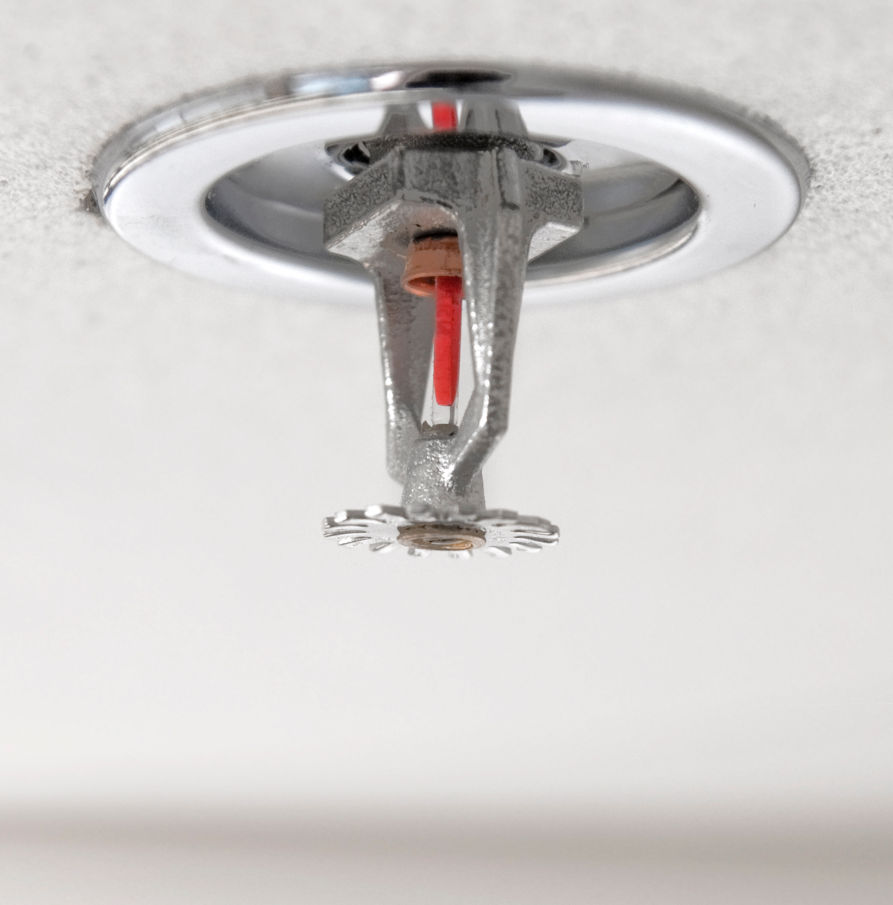
Sprinkler System Monitoring
Automatic sprinkler systems are extremely effective in being able to control or even suppress a fire; however, proper inspection, testing and maintenance is required to ensure that these systems remain operational. A fire alarm system can be used and in some cases is required to monitor specific aspects of the sprinkler system and alert the owner if there is an issue with the system so it can be fixed or notify emergency forces if there is a fire. Some of the aspects that can be monitored on a sprinkler system include water flow and valve position.
Below we will discuss three of the most common devices that can be used to monitor a sprinkler system: vane waterflow switch, pressure switch, and valve tamper switch.
Vane Waterflow Switch
Flow switches are installed inside the piping of a sprinkler system and have a vane that moves with the flow of water. When water begins to flow within the pipe, the vane operates a switch that initiates an alarm.
Codes like NFPA 101 Life Safety Code may require that a sprinkler system be supervised by a fire alarm system. In this case, a waterflow switch allows the fire alarm system to monitor for waterflow.
Vane-type waterflow switches can only be used in wet pipe sprinkler systems since the initial flow of water from a dry pipe sprinkler system can break the vane off of the switch. These switches need to be installed per the requirements in NFPA 72 National Fire Alarm and Signaling Code, as well as NFPA 13 Standard for the Installation of Sprinkler Systems.
These flow switches need to be designed so that they activate when there is a flow through the piping that’s equal to or greater than the smallest sprinkler on the piping but cannot activate from pressure surges in the sprinkler piping. Typically, the sprinkler contractor is going to choose the type of water flow switch used and will install this switch within the piping.
Pressure Switch
Sprinkler alarm valves contain an alarm port on them that will only see water pressure when the valve is flowing water. Water pressure switches can be installed on these ports to monitor for a change in water pressure and in turn a condition in which the sprinkler system is flowing water.
Pressure switches are used in dry pipe sprinkler systems that cannot use a vane waterflow switch or in some wet pipe sprinkler systems. Pressure switches can also be used to monitor the air pressure of within a dry pipe or preaction sprinkler system.
Any valves placed between the sprinkler alarm valve port and the pressure switch need to be monitored by the fire alarm system to ensure there will be notification if the valve is shut, since it will stop the pressure from being able to reach the pressure switch.
Valve Tamper Switch
Valves that can shut off the water supply for a fire suppression system (e.g., a sprinkler system) are required to be supervised to ensure they are not closed while the system is in service.
One way of supervising these valves is the use of the fire alarm system. This is done by installing a switch that will send distinct signals to indicate that either a control valve has been moved from its normal position (typically meaning that the valve has been shut) or that the control valve has been restored back to its normal position. Since the device needs to be able to send a restoration signal if and only if the valve is restored to its normal position, the use of valve lacing is not permitted by NFPA 72.
There are many types of initiating devices that can be used in a fire alarm system, and many more that have not been discussed here.
For a fire alarm system to be able to notify the occupants and emergency forces of a fire, it must be able to quickly detect the fire. This is where the proper selection and design of a fire alarm detection system is crucial. So when considering the different types of detection options for a fire alarm system, it is important to ensure the entire system is also designed, installed, and maintained by a qualified person.

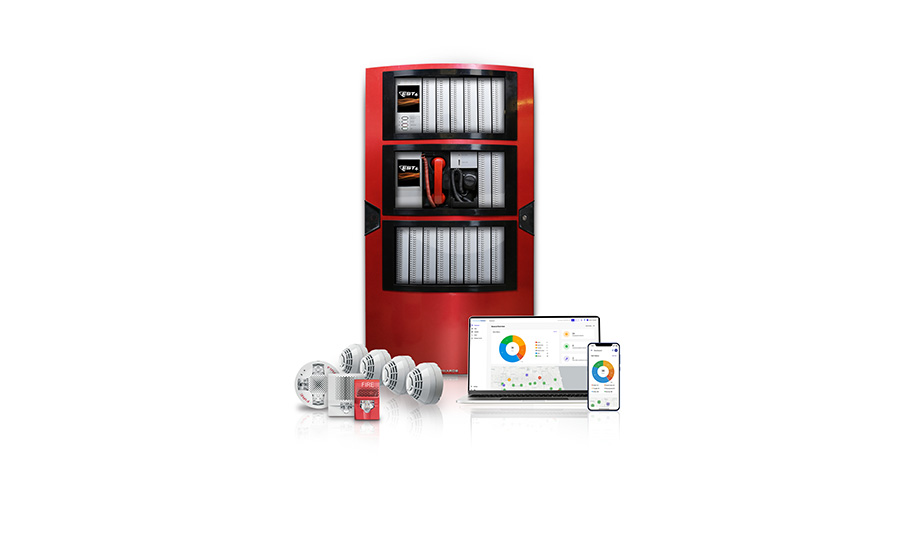 Edwards ConnectedSafety+ is a digitally enabled, SaaS life-cycle solution for commercial fire installations that leverages the strength of Edwards EST4 fire system products to improve outcomes for dealers and trusted partners. Before, users needed to go onsite to troubleshoot system issues, conduct manual inspections and complete paper-based workflows. Now with Edwards ConnectedSafety+ security dealers can ‘know before you go.’ Edwards ConnectedSafety+ provides remote predictive maintenance insights that allow partners to be proactive and take preventative action to help ensure system functionality when it is needed most.
Edwards ConnectedSafety+ is a digitally enabled, SaaS life-cycle solution for commercial fire installations that leverages the strength of Edwards EST4 fire system products to improve outcomes for dealers and trusted partners. Before, users needed to go onsite to troubleshoot system issues, conduct manual inspections and complete paper-based workflows. Now with Edwards ConnectedSafety+ security dealers can ‘know before you go.’ Edwards ConnectedSafety+ provides remote predictive maintenance insights that allow partners to be proactive and take preventative action to help ensure system functionality when it is needed most.
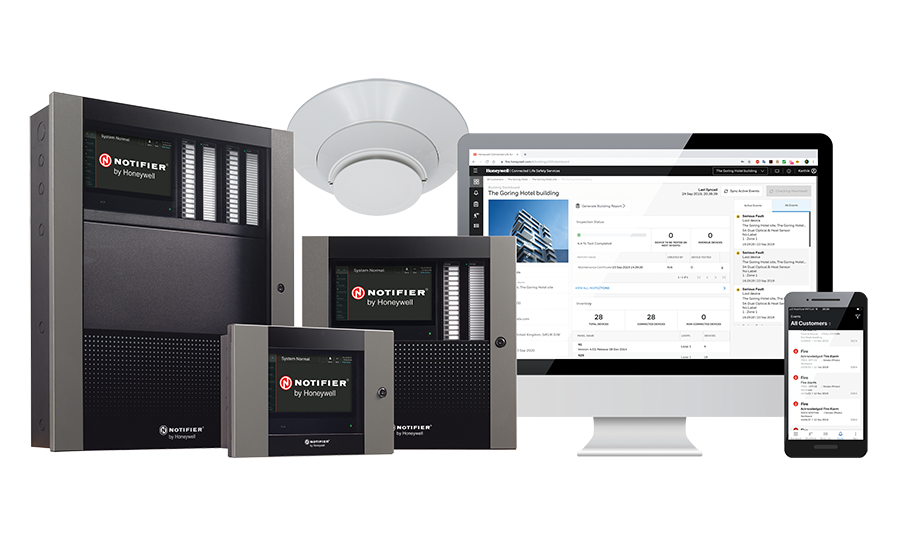 Honeywell’s NOTIFIER INSPIRE is an all-in-one fire system that delivers reliable protection, scalability, efficient monitoring, and flexible and timely reporting. It is designed to scale based on the buildings’ needs, minimizes the need for equipment changes and provides secure connectivity. NOTIFIER INSPIRE series with Self-Test smoke detectors are securely enabled through Honeywell’s Connected Life Safety Services (CLSS) cloud-based platform.
Honeywell’s NOTIFIER INSPIRE is an all-in-one fire system that delivers reliable protection, scalability, efficient monitoring, and flexible and timely reporting. It is designed to scale based on the buildings’ needs, minimizes the need for equipment changes and provides secure connectivity. NOTIFIER INSPIRE series with Self-Test smoke detectors are securely enabled through Honeywell’s Connected Life Safety Services (CLSS) cloud-based platform.
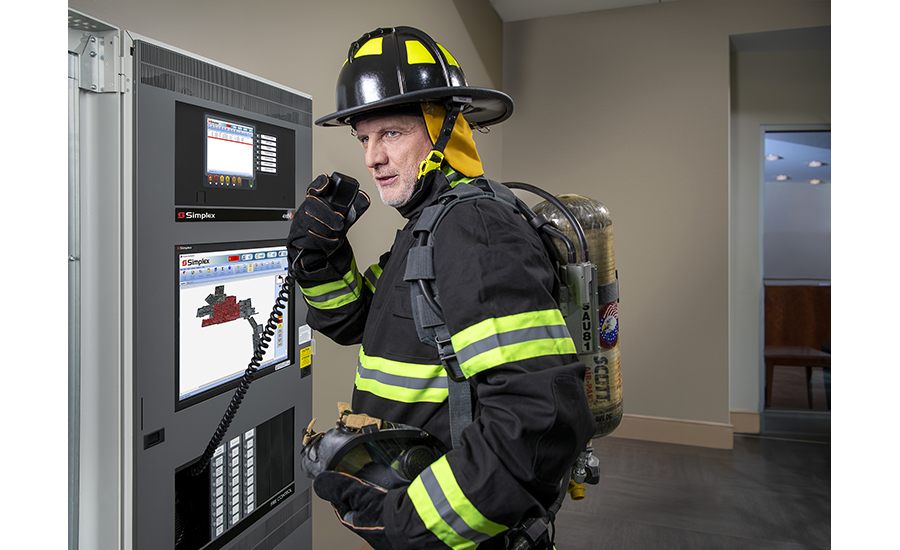 Simplex ES Net is an IP-based fire and life safety network that optimizes system design and installation flexibility with impressive network capacity, speed and performance. Supporting up to 687 nodes, ES Net is scalable, highly resilient and has the capacity to handle even the largest multi-building campus environments. ES Net provides data rates up to 100 Mbps and allows a range of network media including Ethernet, DSL and fiber.
Simplex ES Net is an IP-based fire and life safety network that optimizes system design and installation flexibility with impressive network capacity, speed and performance. Supporting up to 687 nodes, ES Net is scalable, highly resilient and has the capacity to handle even the largest multi-building campus environments. ES Net provides data rates up to 100 Mbps and allows a range of network media including Ethernet, DSL and fiber.
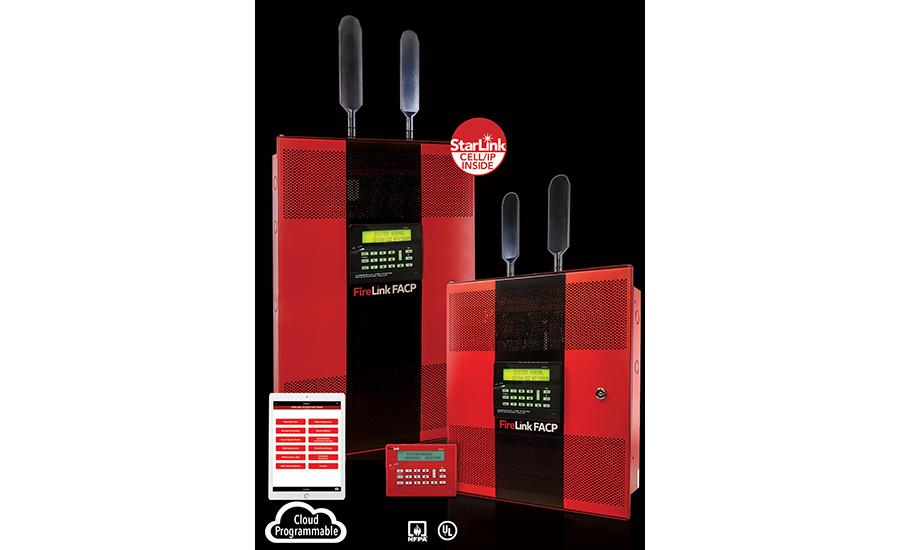 NAPCO FireLink XL 255 features an award-winning, all-in-one design created to save fire dealers both labor and equipment; it has a built-in cell/IP communicator powered by StarLink and an on-door LCD Touchpad. Featuring easy to use cloud-programming from any smart device, FireLink XL starts out at 128 points, and is expandable to 255 points with one module; plus, it features a robust 7 A/24 V power supply.
NAPCO FireLink XL 255 features an award-winning, all-in-one design created to save fire dealers both labor and equipment; it has a built-in cell/IP communicator powered by StarLink and an on-door LCD Touchpad. Featuring easy to use cloud-programming from any smart device, FireLink XL starts out at 128 points, and is expandable to 255 points with one module; plus, it features a robust 7 A/24 V power supply.
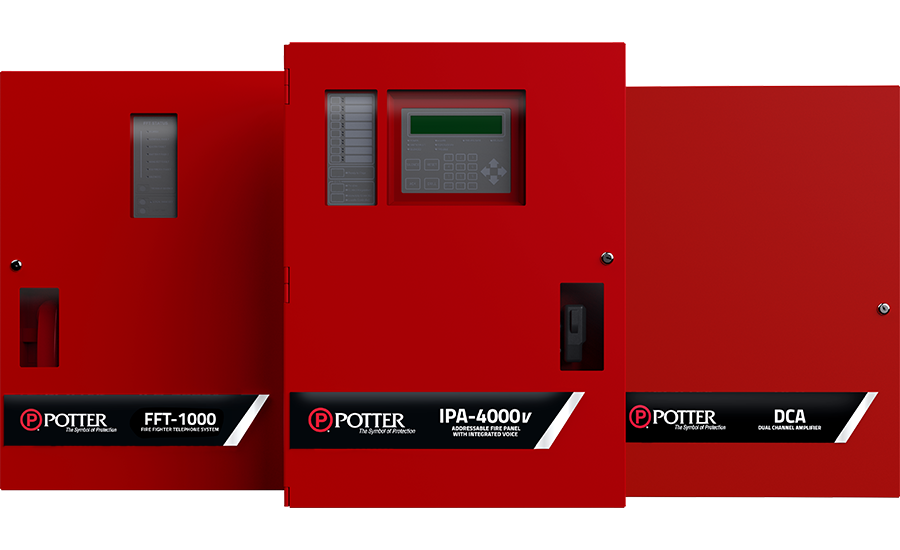 Potter's Integrated Voice System — along with the IPA-4000V and AFC-1000V fire alarm control panels — feature capacity including up to 104 programmable push buttons, 31 total system amplifiers, 248 speaker circuits and remote system control using the new LOC-1000 Local Operator Console. The Integrated Voice System utilizes a text-to-speech feature that allows users to create custom spoken audio messages themselves without needing third party software or voice artists.
Potter's Integrated Voice System — along with the IPA-4000V and AFC-1000V fire alarm control panels — feature capacity including up to 104 programmable push buttons, 31 total system amplifiers, 248 speaker circuits and remote system control using the new LOC-1000 Local Operator Console. The Integrated Voice System utilizes a text-to-speech feature that allows users to create custom spoken audio messages themselves without needing third party software or voice artists.
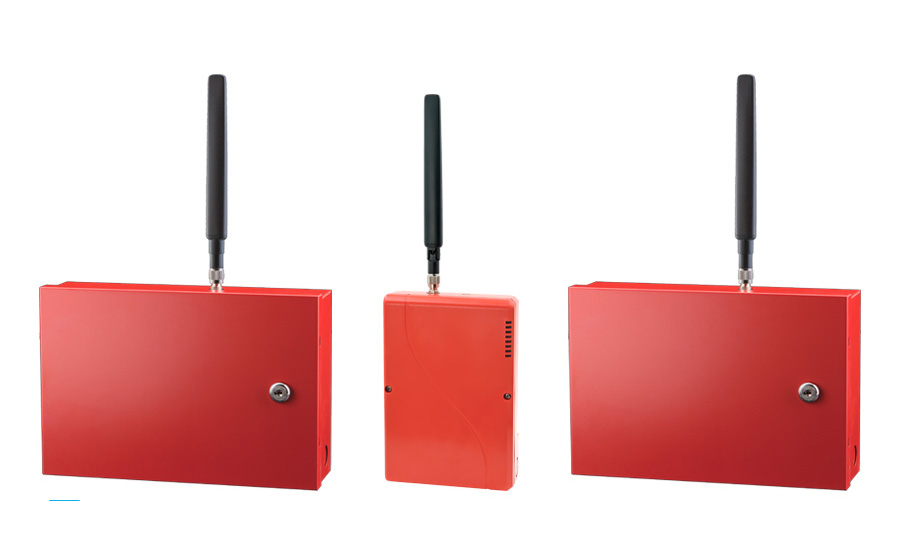 With the reintroduction of the TG-7FS as a 5G LTE-M product, Telguard now has a full portfolio of UL Listed communicators (ULC for Canada) that span from the economical TG-7FP sole-path communicator, the TG-7FS dual path solution that backs up a landline, to the TG-7FE with internet connectivity. Launched earlier this year, Honeywell is now offering the full line of HW-TG7 products, which combine the trusted reliability of Telguard products with native integration into the Honeywell CLSS platform.
With the reintroduction of the TG-7FS as a 5G LTE-M product, Telguard now has a full portfolio of UL Listed communicators (ULC for Canada) that span from the economical TG-7FP sole-path communicator, the TG-7FS dual path solution that backs up a landline, to the TG-7FE with internet connectivity. Launched earlier this year, Honeywell is now offering the full line of HW-TG7 products, which combine the trusted reliability of Telguard products with native integration into the Honeywell CLSS platform.

